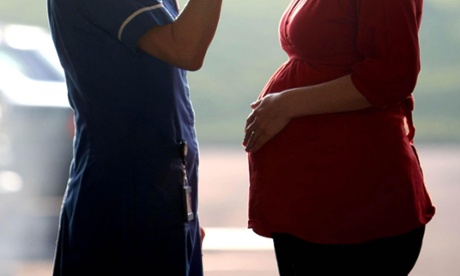
I wasn’t surprised to read last week that hypnobirthing is becoming a standard part of birth preparation, with more and more British hospitals running their own courses.
To the uninitiated, the stories of painless, chilled-out labours it has facilitated might sound akin to the orgasmic birth movement, which, let’s face it, isn’t for everyone. But I’ve tried hypnobirthing, and can vouch that it’s a commonsense antidote to how alien and scary one of the most natural things in the world has become for many women.
I’ve had two babies. The first time round, my son’s birth was a pretty normal experience: harrowing. Preparation comprised of wishy-washy pregnancy yoga and a quick run-through at the hospital of the procedures for inducing tardy babies, providing pain relief and dealing with emergencies. I got busy writing a birth plan, making a playlist and renting a Tens machine to ease the unprecedented agony afoot. None of these things turned out to be helpful.
In the early stages of labour I followed the standard advice: ran a bath, ate food, popped some paracetamol. Ten hours later, I was having frequent and dramatic contractions, so I was driven to hospital. The midwife watched me double up, nodded approvingly and snapped on her latex gloves to inspect my progress. I’d barely begun, she announced, and sent me home. Many hours later, I returned, but they said I still wasn’t far enough along to be allowed to stay. My sister’s first labour had been slow, like this, and ended with a placental abruption, stillbirth and many blood transfusions. This was unlikely to happen to me (it’s unlikely to happen to anyone), but I was terrified anyway.
It was a quiet night in the birthing centre so they let me stay. Many more grisly hours later, a midwife suggested a pethidine injection so I could rest. I reluctantly accepted and was put on a drip, given a synthetic hormone to speed things up, and an epidural. Eventually, a doctor yanked out my baby, who had exhibited signs of distress in utero, with forceps. He was bruised but fine.
My daughter’s birth was the exact opposite. I was dreading it, so in the run-up we did a local hypnobirthing course of four three-hour evening sessions. The practitioner, Kat, reckoned that the reason many women have protracted, harrowing births is because we’re frightened and aren’t given the time and space to do this perfectly natural thing in a relaxed fashion. Stress can hinder labour’s progression, and then we fall into a cascade of medical intervention. She was, unknowingly, summarising my son’s birth.
The classes were part educational – complete with diagrams and excruciating videos of women labouring in near silence – and part hypnosis. Kat relaxed us, sometimes sending us to sleep, and filled us with positivity. She encouraged us to refer to contractions as “surges”, which sounds less clinical and more accurately describes how they feel. At home I read (most of) the book we’d been given (Hypnobirthing by Marie Mongan), and listened daily to a soothing CD with positive birth affirmations. Happily, this often sent me to sleep, too.
We worked at developing positive triggers to bring on a relaxed state when the time came. For instance, Kat coached my husband to place his hand on my shoulder and say: “go deeper”. This was both hilarious and effective. The tinkly opening bars of music on the CD also became a fast track to serenity.
The first sign that the course was working was when I made the previously unimaginable decision to try for a home birth. Hypnobirthing had given me the confidence and clarity to address my discomfort about having to go to hospital.
My daughter was due on my birthday, and that’s when she arrived. I kicked back in bed all day, nibbling pizza, listening to my CD, breathing into my belly and occasionally being firmly pressed on the shoulder (“go deeper” – still hilarious when I was actually in labour, and still effective). I was letting my body get on with it, rather than rolling around on a birthing ball, or preparing to go to hospital.
By teatime, the “surges” had become so outrageously strong that they were almost beyond painful. Some bizarre internal engine had taken over and I remained calm, excited and a bit giggly. The midwife arrived, took one look at me and said “baby’s coming”.
It was a 100% positive experience and I have recommended hypnobirthing to every expectant parent ever since.
I was stunned that the large UK study published earlier this year found that hypnobirthing made only a three% difference to the uptake of epidurals. Admittedly, unlike my hypnobirth, all those in the study were first labours (which are usually longer than subsequent ones), and took place in hospitals. But, pain relief statistics aside, the study showed that the process did have significant positive effects.
Soo Downe, the lead author, concluded that it was worth spending the £4.83 per woman on hypnobirthing sessions plus a CD, because it reduced fear of giving birth, and postnatal stress. This implies that there could be add-on benefits such as establishing breastfeeding habits and nurturing positivity about future births. Participants also reported finding the course useful in other areas of their lives. As did I, having proved to myself that enormous fears aren’t insurmountable. It was a triumph.

